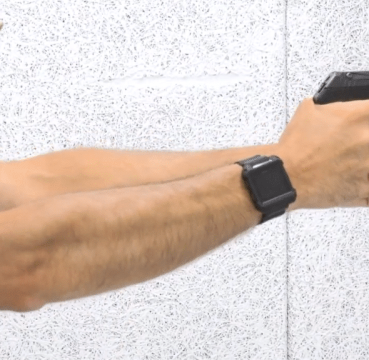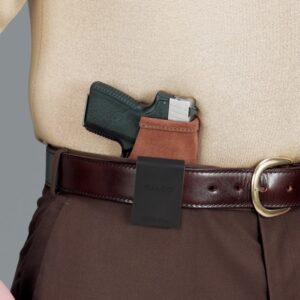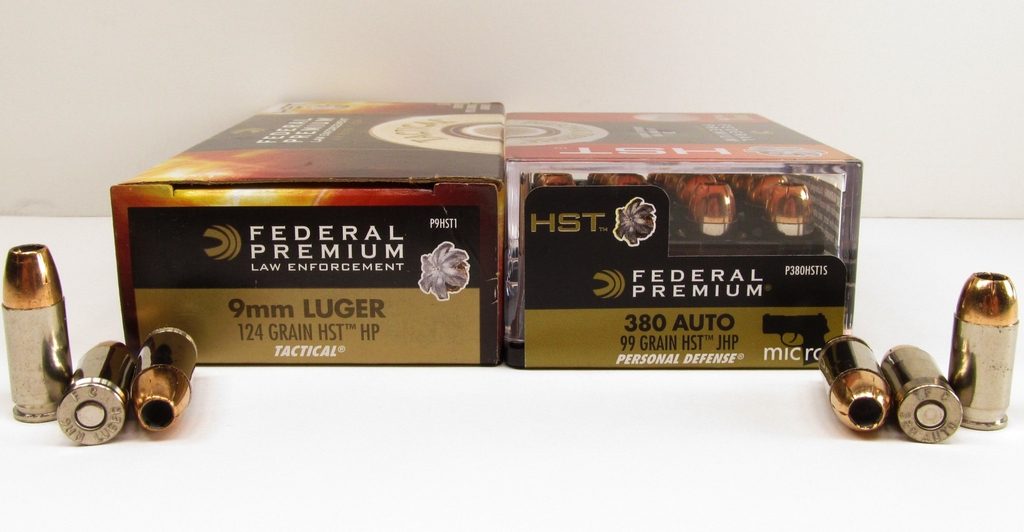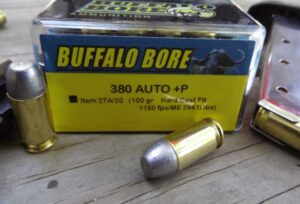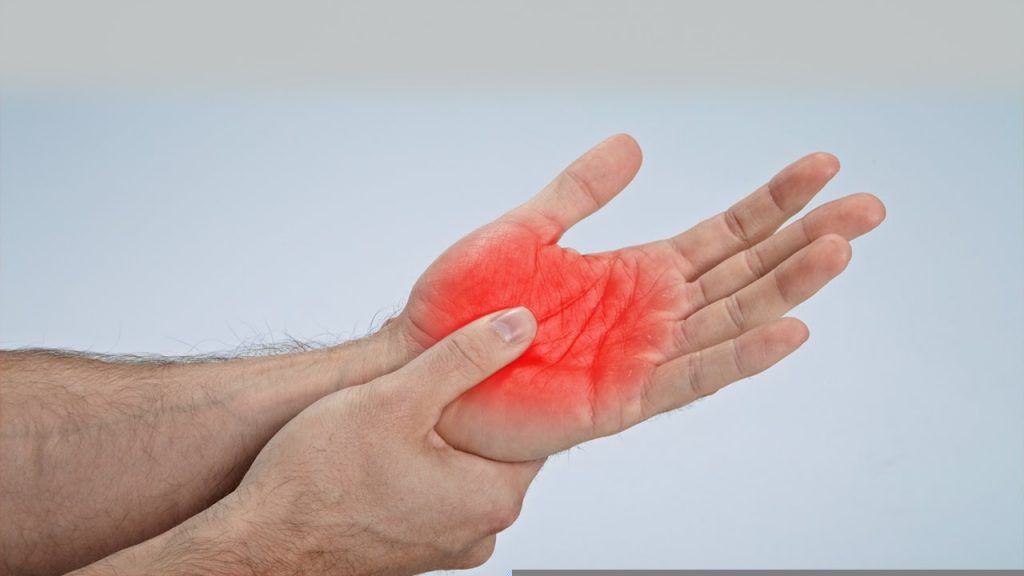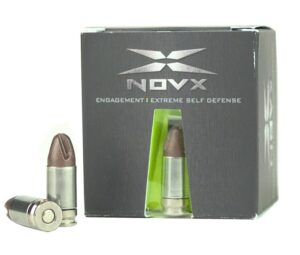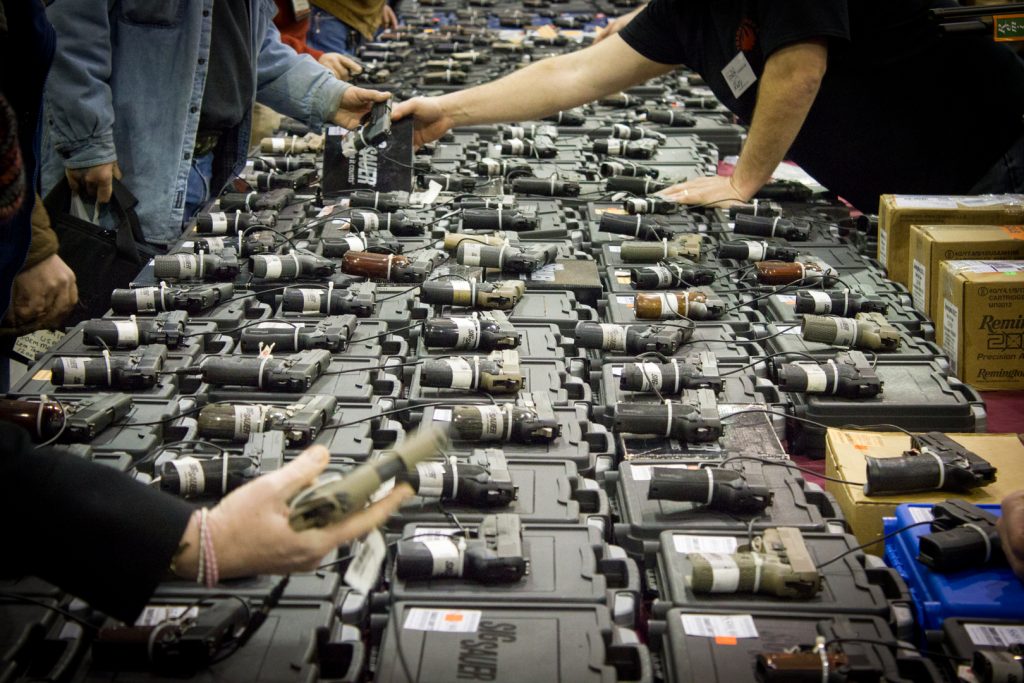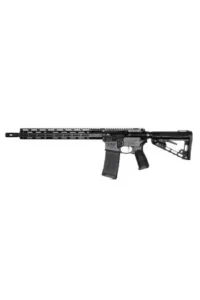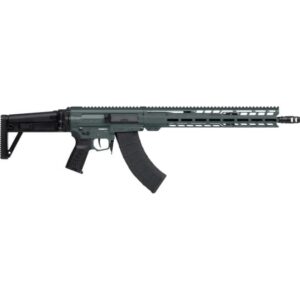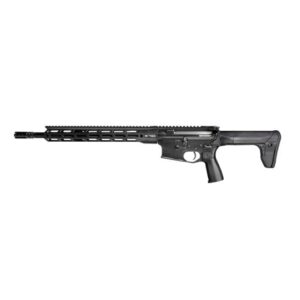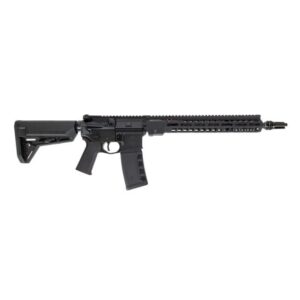Table Of Contents
For a firearms enthusiast, life is never easy when trying to decide which handgun to buy next. Well take an in depth look at 9mm vs. .380 ACP handgun calibers.
I’ve recently set my eyes on the Zenith Tisas Fatih 13, a shameless copy of the Beretta 84FS Cheetah, itself a 13-round semi-auto pistol chambered in .380 ACP.
Yeah, I know the Fatih 13 can be a hard sell — most gun aficionados (at least those I know) don’t like guns from Turkey, and they also tend to dismiss the caliber it’s chambered for because of its weak ballistics. But I like the handgun for a couple of reasons.
Now we’re not here to discuss anti-racist stuff so we’re not talking about the Turks. So what makes this handgun special? While on the surface it may look like another Beretta copycat, it can be a great little high-capacity DA/SA handgun for concealed carry if we’re to believe all the reviews and videos about it online.
As an added bonus, it’s one hell of a looker. And why wouldn’t it be? Beretta makes some of the better looking guns out there. The Turks who decided to copy the Cheetah have fine taste as far as guns — and they really knew what they were doing when they decided to build this knockoff.
LOOKS CAN BE DECEIVING, BUT…
I have nothing against copies so long as they work. Everything these days is being copied left and right, no big deal.
Besides, there are more important things to think about. As long as a gun looks good, feels good in my hands, shoots well and sells for a good price ($350 being the lowest price for a NIB condition Fatih 13 last I checked with my LGS), I really can’t care less.
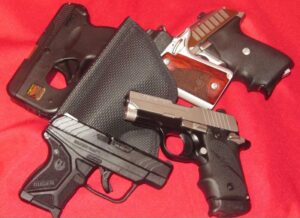
Why should I bother with any .380 ACP handgun when there are tons of ultra-compact polymer handguns chambered in 9mm on the market?
And why even compare the .380 ACP to the 9mm, when it’s common knowledge that the 9mm is faster and more powerful, being essentially the magnum version of the .380 ACP?
And unlike typical magnum versions of any weaker cartridges, 9mm ammo (not to mention guns chambered for it) is far more affordable than its weaker mini-me. So there should be no reason for anyone to even consider getting a .380 ACP handgun, yes? Maybe.
WHY CARRY A HANDGUN IN .380 ACP?
I can’t let go of that Turkish Beretta copy, try as I may — 13 rounds to boot, and it just looks so damn sexy, James Bond’s Walther PPK has nothing on it. And it’s a lot cheaper than the Cheetah.
And .380 ACP handguns are smaller than 9mm handguns in general, making them easier to conceal. And maybe the .380 ACP isn’t as weak as it used to be, what with this advancement in terminal ballistics called fluted bullets?
If you’ve been living under a rock for a while, you’ve probably never heard of this new bullet design which came out just a couple years ago. This design gives the .380 ACP the edge that it badly needs (no pun intended) to keep up with the 9mm.
The “flutes”, or scallops, in these bullets allow for the .380 ACP to penetrate deeper than a FMJ but leave a wound channel similar in profile to what one would expect from a 9mm hollow point. And yet, these bullets are not hollow points (because .380 ACP hollow points is a terrible idea).
So how’s it possible for a non-hollow point to perform like a hollow point? Hell I wouldn’t know — I’m no bullet engineer. The description on the retailer’s website says “Radial flutes that force the hydraulic energy inward to build pressure”. Like, say what?
THERE IS NO MAGIC BULLET
To clarify, I don’t think this is going to be some magic bullet (pun intended, blame it on one of the manufacturers’ marketing description) because it tends to overpenetrate even worse than a FMJ when used for cartridges more powerful than the .380 ACP. But what it does is it gives life to rather anemic cartridges.
It’s not without a downside though. As with all things in life, we all get what we pay for. In the case of these modern bullets, their innovative design doesn’t come cheap.
And we all know that pricing affects availability and vice versa, as in the case of the still rather unpopular but powerful .357 SIG — which reminds me of the first ever Handgun Caliber Showdown article I’ve written. And in that article, I asked a big “What if” type of question.
So let’s start this debate by asking ourselves, what if these fluted bullets cost about the same as regular run-of-the-mill round nose bullets? Would it make the .380 ACP as popular as the 9mm? Is there a chance it could make the 9mm obsolete?
380 ACP vs 9MM AMMO DIFFERENCES
Before we try to understand why it’s so important that this fluted bullet design evens up the score between the .380 ACP and the 9mm, let’s see how much of a disparity in ballistics there is between the two cartridges. Here are charts that show all the important numbers:
| Dimensions | .380 ACP | 9mm |
| Case type | Rimless, straight | Rimless, tapered |
| Bullet diameter | 0.355 inch | 0.355 inch |
| Neck diameter | 0.373 inch | 0.380 inch |
| Base diameter | 0.374 inch | 0.391 inch |
| Rim diameter | 0.374 inch | 0.392 inch |
| Rim thickness | 0.045 inch | 0.050 inch |
| Case length | 0.680 inch | 0.754 inch |
| Overall Length | 0.984 inch | 1.169 inch |
| Maximum Pressure | 21,500 psi | 34,084 psi |
BALLISTICS PERFORMANCE
Right off the bat, we can see on that top chart that both cartridges use bullets with the same diameter — three-hundred fifty-five thousandths of an inch.
This means if we have a 9mm handgun and a .380 ACP handgun and both are loaded with FMJs, both will create holes with the same size in the same target. The difference will be in how far each of the bullets will travel.
| Load | Bullet Weight in gr. | Velocity in fps | Muzzle Energy in ft-lb |
| Underwood Gold Dot 9mm +P+ | 147 | 1175 | 451 |
| Buffalo Bore 9mm +P+ JHP | 124 | 1300 | 461 |
| Federal Ammunition 9mm | 115 | 1180 | 356 |
| Buffalo Bore 380 Auto +P HC-FN | 100 | 1150 | 294 |
| Underwood Gold Dot 380 Auto +P | 90 | 1200 | 288 |
| Cor-Bon 380 Auto DPX | 80 | 1050 | 196 |
While I wouldn’t want to get hit by either, the 9mm packs the stronger punch as seen on the rightmost column. Comparing apples-to-apples, standard pressure 9mm loads (e.g. that Federal load on the chart above using a 115-grain bullet that can go as fast as 1,180 feet per second out of a 4-inch barrel) have as much as ~81.63% higher muzzle energy compared to standard pressure .380 ACP loads.
What’s interesting to note is the 9mm cartridge can offer as much as 81.63% more potential stopping power even when its brass only has 10.88% more room for powder compared to that of the .380 ACP’s, not to mention that same 9mm brass is only able withstand up to 58.53% higher pressures (SAAMI specifies 34,084 psi for the 9mm vs. 21,500 psi for the .380 ACP) but again can generate that much more muzzle energy.
It’s amazing what Georg Luger has accomplished in the 9mm utilizing what little room is available in such a small cartridge. But I have no doubt John Browning could have done the same thing if he designed the .380 ACP as a high-velocity cartridge with bigger handguns in mind.
ENTER +P ROUNDS
Back to the ballistics chart, the big difference in muzzle energy between the two caliber’s standard loads gets a wee bit smaller as we move to the more powerful +P (overpressure) variants.
For instance, Underwood’s 90-grain Gold Dot .380 ACP +P reaching velocities of up 1,200 feet per second produces 288 foot-pounds of force. Its 9mm +P counterpart on the chart is Buffalo Bore’s 9mm +P+ that can generate a muzzle energy upwards of 461 foot-pounds of force, still 60% more powerful but nowhere near as powerful as standard 9mm is when compared to standard .380 ACP.
But let’s stop comparing apples-to-apples for now and think a bit outside of the box. What if we compare the most powerful commercially available .380 ACP +P load to a standard pressure 9mm load? Yes, it’ll be a bit of an unfair comparison, but then isn’t this whole .380 ACP vs. 9mm bit a somewhat unfair comparison too?
.380 ACP +P VS. STANDARD PRESSURE 9MM
The most powerful commercially available load for the .380 ACP on the chart so far, Buffalo Bore’s 380 Auto +P HC-FN (non-jacketed hardcast flat nose) uses a 100-grain bullet (just 15 grains shy of typical-weight 9mm bullets) that can go as fast as 1,150 feet per second (only 30 feet per second slower than standard 9mm velocities).
Comparing muzzle energies, this overpressure Buffalo Bore .380 ACP load is only ~21% weaker than standard 9mm loads! A 21% difference is still relatively significant but considering the delta between standard loads of 81.63%, Buffalo Bore achieving 294 foot-pounds of force from a .380 ACP is quite a feat.
So, does this mean we shouldn’t feel undergunned if we were to get into a gunfight with someone who carries a 9mm handgun and we only had a .380 ACP pocket pistol loaded with these rounds? Well, it would depend on a few things.
ALL GUNS ARE NOT EQUAL
For one, not all handguns can handle overpressure ammo. In fact, the majority of handguns on the market are not rated for +P and +P+ rounds. If we’re to benefit from these hot .380 ACP loads, we’ll have to have one of these handguns:
RECOIL — WHAT YOU NEVER SEE COMING
Another important thing to consider, even if a .380 ACP handgun is rated for +P loads, its weight will make recoil difficult to control, maybe even painful for some of the most recoil-shy people. The .380 ACP is supposed to be a mild and controllable cartridge but we’re talking +P ammo here.
Using our go-to online recoil calculator, let’s crunch a few numbers to get quantifiable data to help us compare the kinds of recoil we get when shooting standard and overpressure ammo from a Kel-Tec P-3AT:
| Cor-Bon 380 Auto DPX | Buffalo Bore 380 Auto +P HC-FN | |
| Bullet weight in gr. | 80 | 100 |
| Bullet velocity in gr. | 1050 | 1150 |
| Powder charge weight in gr. | 2.6 | 3.4 |
| Kel-Tec P-3AT weight in lbs. | 0.529 | 0.529 |
| Recoil velocity in fps | 26.2 | 35.65 |
| Recoil energy in ft.lbf | 5.64 | 10.45 |
Unless you handload your ammo or you’re a physicist, most of the numbers on the top chart wouldn’t mean a thing to you, but no worries.
We’re only interested in differences in recoil between standard and overpressure .380 ACP loads, so let’s just focus on the two rows on the bottom. If you have no idea what recoil velocity and recoil energy values represent, feel free to read this article where I explained them in great detail.
When shooting both standard and overpressure loads from the Kel-Tec P-3AT, the difference in recoil velocity is 36.06%. This means there will be that much higher muzzle flip when shooting the hot Buffalo Bore .380 ACP +P load. That’s not a lot really, only around 1/3 higher muzzle flip.
FELT RECOIL CAN BE PAINFUL
So let’s check out the recoil energy row, shall we? Ah, there’s a 85.28% difference in recoil energy between the two loads. Yes, you read that right, 85.28% — almost double. This means there will be significantly more felt recoil when shooting the hot load from the tiny Kel-Tec pocket gun.
And really, this shouldn’t come as a surprise considering that this .380 ACP +P load is nipping at the heels of standard 9mm loads.
But then you might ask “I can handle 9mm just fine — what’s stopping me from shooting these .380 +P loads?” Fair point. Let’s crunch some more numbers then.
| Buffalo Bore 380 Auto +P HC-FN | Federal Ammunition 9mm | |
| Bullet weight in gr. | 100 | 115 |
| Bullet velocity in gr. | 1150 | 1180 |
| Powder charge weight in gr. | 3.4 | 4.4 |
| Kel-Tec P-3AT weight in lbs. | 0.529 | |
| Glock 26 weight in lbs. | 1.36 | |
| Recoil velocity in fps | 35.65 | 16.57 |
| Recoil energy in ft.lbf | 10.45 | 5.8 |
Note we’re comparing recoil values between a Kel-Tec P-3AT loaded with .380 ACP +P JHPs and a Glock 26 loaded with standard pressure 9mm ammo. Both handguns weigh relatively less compared to their bigger brethren, and both are quite popular.
Comparing the two bottommost rows, we can see a 53.52% difference in recoil velocity favoring the Glock 26, meaning it’ll have less muzzle flip — and a 44.45% difference in recoil energy, meaning felt recoil when shooting standard 9mm from the Baby Glock will only be around half as bad as when shooting .380 ACP +P from the little Kel-Tec.
So as we can see, while overpressure .380 ACP loads look good on paper, they might not be as practical as standard pressure loads in that A, you’ll want a handgun rated for +P ammo to shoot these and B, depending on your pain threshold and the weight of your handgun, the recoil can be painful.
Oh and I almost to forgot to mention, these hot .380 ACP loads can be really expensive (which is another thing that makes them impractical), which begs the question, why are we even trying to avoid the more practical standard pressure .380 ACPs in the first place?
IS STANDARD .380 ACP REALLY THAT BAD?
That’s a tough one to answer. Standard .380 ACP loads usually perform best when they’re loaded with FMJs just because they don’t have enough oomph to make JHPs expand. And because of the low velocities .380 ACP is known for, they will not overpenetrate when loaded with FMJs — at least not as bad as 9mm FMJ. So on one hand, standard .380 ACP FMJs are okay.
But FMJs in general don’t expand (duh) and because of this, there’s always a chance they’ll make two holes which, depending on what side of the argument you’re on, can be a good thing or a bad thing.
Some people think shoot to kill. If you think the same way, then you won’t need to read through the rest of this article. You can carry and shoot standard pressure .380 ACP FMJs as much as you want and be happy with it.
But some people think incapacitating (not necessarily killing) the bad guy is always the goal of carrying firearms for self defense. If you’re one of these people, then standard pressure .380 ACP FMJs will not work for you. What gives?
THIS IS WHERE FLUTED BULLETS COME IN
A quick note on these: I’m currently aware of two brands — Lehigh Defense’s Defender and Penetrator pure copper bullets, and Polycase ARX’s copper-polymer composite bullets.
Besides their bullets’ different compositions and weights, the former has four scallops that run straight from the ogive to the nose terminating in a cross-shaped meplat, while the latter has three somewhat curved fluting from the ogive to the nose resulting in a fan-like pattern on the meplat.
I reiterate, I’m no bullet engineer so I have no idea how such a harmless-looking modification, i.e. the flutes that run the length of the ogive to the meplat, can give these bullets their unprecedented destructive power.
LIVING UP TO THE HYPE
In stark contrast, other uniquely-designed bullets like the G2 Research R.I.P.s look menacing but demonstrate questionable efficacy as far as terminal ballistics. Any bullet engineer out there who knows stuff about these fluted bullets and “fluid transfer”, feel free to chime in.
All I know is compared to a FMJ bullet of the same weight, a fluted bullet will penetrate deeper while consistently crushing flesh, organs or bone along its path, leaving behind a helical wound cavity significantly wider than the bullet’s diameter.
These bullets are so devastating they shouldn’t be used for something like a 9mm or any other cartridge with more powder because they will overpenetrate, causing potential (and usually unwanted) collateral damage. But for standard pressure .380 ACP? These are perfect. Watch the videos below if you’re not convinced:
Unfortunately, and as I mentioned a couple times already, these bullets aren’t cheap. I have no doubt that the .380 ACP could become as popular as the 9mm (possibly even overshadow it, considering how we all like making things smaller and smaller — computers and cellphones, everyone?) if these fluted bullets were as cheap as FMJs. But that will never be.
380 ACP vs 9mm Pros and Cons
Here are a few bullet points to summarize each of these two cartridges’ pros and cons:
9mm Pros:
- Significantly more powerful than the .380 ACP
- Significantly cheaper than the .380 ACP
- More widely available than the .380 ACP
- More popular than the .380 ACP
- Arguably the best defensive handgun cartridge for hollow points
- Standard pressure variants are easy to control thanks to 9mm handguns typically being bigger and heavier compared to .380 ACP handguns
9mm Cons:
- Handguns chambered for this round are usually bigger and heavier than .380 ACP handguns, making them a bit more difficult to carry concealed
- Non-hollow point bullets (e.g. FMJs and fluted bullets) will overpenetrate when shot from this cartridge
.380 ACP Pros:
- Handguns chambered for this round are smaller and lighter than 9mm handguns, making them just a tad bit easier to conceal
- Arguably the best cartridge for fluted bullets
.380 ACP Cons:
- Not a good cartridge for hollow points, +P loads notwithstanding
- Not really a good cartridge for FMJs either
- Needs a fluted bullet to become considerably effective
- +P loads will have really bad felt recoil because guns for this cartridge are typically lightweight
- Significantly more expensive than the 9mm, notwithstanding powder volume and bullet types
Some showdown this turned out to be! Comparing these two handgun calibers makes little sense, if at all. It’s a no brainer that IF you only have two handguns chambered in either caliber to choose from and you absolutely must choose, you should choose the one in 9mm, period. The .380 ACP offers no real advantage over it, and that’s just the way it is.
But with the plethora of handguns on the market, that’d be a really big IF. There’s no way you’ll ever have to choose between just two handguns.
Look, I know why you’re here. You want validation, to know that it’s okay to carry a .380 ACP vs 9MM. You want someone to tell you that there’s nothing wrong if you want a .380 ACP, someone who’ll say to hell with all the naysayers. Otherwise, there’s no reason for you to compare the .380 ACP to the 9mm.
380 ACP vs 9mm CONCLUSION
Any knowledgeable firearms guy worth his salt will tell you that the .380 ACP will be good enough for self defense. If you really need more power, then maybe should get a slightly heavier, slightly more difficult to conceal but a lot more powerful handgun.
And it doesn’t have to be a 9mm too if you feel like it won’t be adequate. You need more power? Get a .40. You need even more power? Get a .45. Not sure whether to pick any of the three?
Then ask yourself, will the .380 ACP be good enough for your intended purpose? If not, then maybe an even better question to ask yourself is, why subject yourself to the torturous task of having to choose when you can simply just buy all of them? You’ll need more $$$ but what the hell…
As for me, between these two; 380 ACP vs 9mm , I want to think the .380 ACP would be the better overall handgun cartridge if fluted bullets were a lot cheaper. But that isn’t the case, and it’ll probably never be.
So as much as I hate to say it, the winner of this round of our series of Handgun Caliber Showdowns is, to nobody’s surprise, the one and only 9mm.
